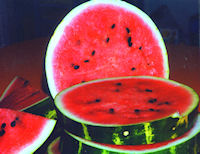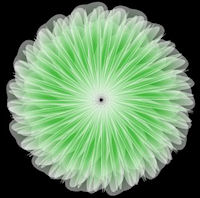Make it meaningful
Many math courses suffer from the following issues:- The teachers don't know why they are teaching particular math topics, and they often don't know what else the students are learning in other subjects.
- As a result, the students don't know why they learn those math topics, either. The common question, "Why do we have to learn this?", is a reasonable one. Do you have a good answer, beyond "It's in the exam" or worse, "Because it's good for you"?
- Find out where the students will use each math topic you teach (it may be in their science class, or some engineering subject). It's great when you can use actual examples from those other subjects and let the students know that's where they'll use each math topic.
- Help students make connections between the math topic and the "real world". If you're not sure how it's used in the real world - do a search!
Start with concrete examples - leave the abstract concepts to later
Math is largely about abstraction. Mathematicians for centuries have thought about real problems and come up with practical ways to solve those problems. Later, they have generalized the process, usually presenting the solution using algebraic formulas.When students have no idea what the original practical problems actually mean, how can they be expected to understand the abstractions of those problems (using the formulas)?

Use watermelons to teach calculus
Start with an interesting, real-world problem (preferably localized)
Most math lectures start with "Here's the new formula for today, here's how you plug in values, here's the correct answer."Problem is, there's no attempt to motivate the learners.
It is good to pique curiosity with a photograph, a short video, a diagram, a joke, or perhaps a graph. This trigger should outline an interesting problem in your local area (so students can relate to it better and feel more ownership).
Where you can, use computers to do the drudge work
Many math courses seem to be more about calculation rather than concepts. These days, it doesn't make sense for humans to spend hours learning how to calculate using complicated algebra.To quote John Allen Paulos:
Mathematics is no more computation than typing is literature.
And then this one, usually attributed to Albert Einstein:
Computers are incredibly fast, accurate, and stupid. Human beings are incredibly slow, inaccurate, and brilliant. Together they are powerful beyond imagination.
For the vast majority of your students (who will not eventually become mathematicians), it's more important they understand the concepts and which process to use when confronted with different real problems. They then should learn how to use computer algebra systems (or graphics calculators) to solve such problems.
Some examples:
- I observed a lesson recently where the math teacher got his students to calculate the standard deviation of a set of scores. He started with the formula then allowed the students to use Excel. He wanted them to apply the formula (rather than let Excel do it directly using STDEV, which is what many students actually did).The problem was, the students didn't even know what "standard deviation" meant. They were just plugging in numbers with little idea of what it meant. Finally someone remembered the standard normal curve and could explain what they were all doing. (See Probability Distributions - Concepts)
The teacher should have made sure the students had the general idea first, including the general meaning of "distance from the mean". - When finding the length of a curve using calculus, it's actually not possible to find the answer using ordinary integration (because the integral does not exist). But using a computer algebra system, we can easily find the answer for such problems and spend more time understanding the problem and the solution given. (See Arc Length of a Curve.)
- Creativity and ownership
They have little say in what the topics are (that's usual for most formal education) and the exact same assignments are given to everyone. It's not surprising there is little enthusiasm for such "one size fits all" approaches.

Computer-generated flower
There are many ways we can encourage creativity in math. Technology is one avenue - get students to use creative means to describe a mathematical concept (it could be a video, an animation, a diagram or perhaps a concept map).
Such individualized assignments get them thinking about the bigger picture, encourages creativity, and is more likely to generate feelings of ownership than the normal mass-produced assignment.
No comments:
Post a Comment